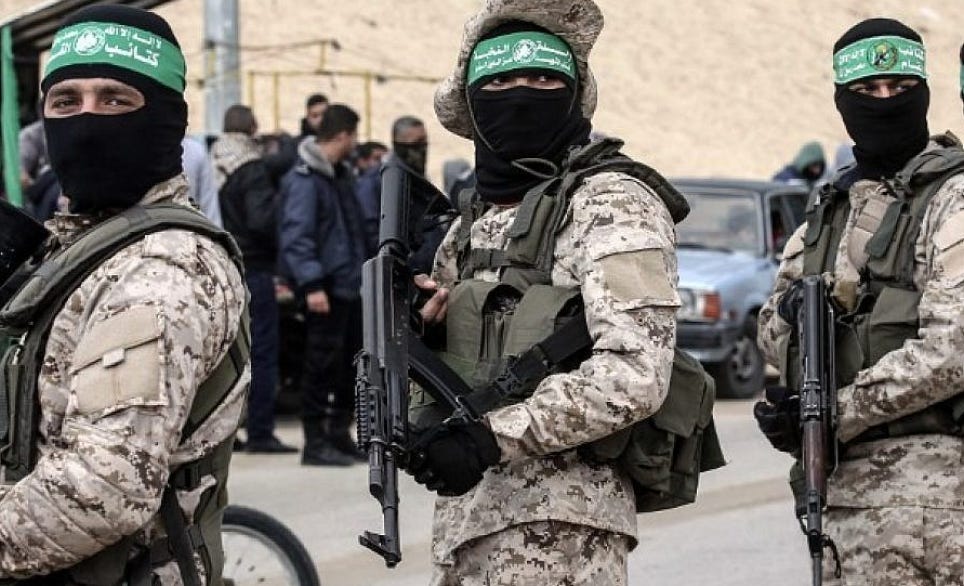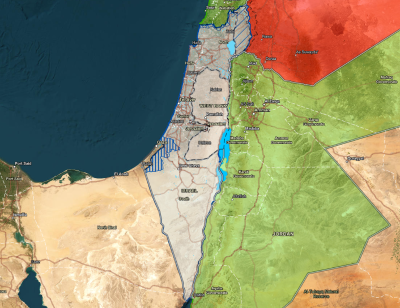- Reaction score
- 8,295
- Points
- 1,160
Interesting UN summary of the situation as of 1961.
In the land held by the nation of Israel, as of November 30, 1947 there were:
498,000 Jews in settlements
497,000 Arabs in settlements and living nomadic lives that didn't recognize borders
In the Trans-Jordan portion allotted to the Arabs by the UN there were:
725,000 Arabs
10,000 Jews
Congratulations to the UN. Nice first job. /sarcasm
30,000 Arabs leave immediately out of a total population of 1,222,000 while the Jews with a base of 508,000 were being supplemented by refugees from Europe.
By the day Israel was proclaimed the 1,222,000 Arbs hs shrunk to something like 1,000,000 with the remaining 200,000 or so had moved into neighbouring territories. Again a fair number of the Arabs were nomads, generally known as Bedu, who would have had no fixed abode anywhere let alone in the lands known as Israel, Palestine and Trans-Jordan.
The Jewish population was in excess of 500,000 and tied to specific settlements that had been purchased from local landholders prior to the League of Nations mandate in 1922. Some biblical titles, such as those in Hebron, were recognized by all sides. The local Jews often found themselves at odds with the European Jews and often more sympathetic to their Arab neighbours.
There were two truces recognized in 1948 - the first on June 11 and the second, July 19,
Within the Israeli state borders proper, by July 19, 1948
498,000 Jews in settlements
497,000 Arabs, both settled and nomadic, had been reduced to 50,000.
An Arab outflow of 447,000
The Arabs fled the cities and found refuge in neighbouring lands.
1,222,000 Arabs in Mandatory Palestine in 1947
3-400,000 Arabs in Mandatory Palestine in 1949
Over 500,000 Jews
In view of the fact that more than half of the territory of Palestine was allotted to the Jewish State, whereas the Jewish population of the country at that time was less than half of the Arab population,1 a very large Arab minority would have been included in the Jewish State under the Partition Plan. In fact, the Jewish element in the Jewish State would have amounted to approximately 498,000, whereas the Arab minority, consisting of sedentary and nomadic populations, would have totalled 497,000 persons. In the Arab State, the Jewish element would have amounted to 10,000, within a total population of 735,000.
In the land held by the nation of Israel, as of November 30, 1947 there were:
498,000 Jews in settlements
497,000 Arabs in settlements and living nomadic lives that didn't recognize borders
In the Trans-Jordan portion allotted to the Arabs by the UN there were:
725,000 Arabs
10,000 Jews
11. Following the adoption of the partition resolution by the General Assembly, immediate, widespread disturbances broke out in Palestine on an even larger scale than before. The situation which obtained throughout the area was described by the five-member Palestine Commission charged with the implementation of the Plan as follows: "The organized efforts of Arab elements to prevent the partition of Palestine; the determined efforts of Jews to ensure the establishment of the Jewish State as envisaged by the resolution; and the fact that the Mandatory Power, engaged in the liquidation of its administration and the evacuation of its troops, has found it impossible fully to contain the conflict, have led to virtual civil war in Palestine; to a steady deterioration in administration and security in the territory; and to the imminence of widespread chaos, starvation, strife and bloodshed …".
Congratulations to the UN. Nice first job. /sarcasm
B. Flight of the Arabs
12. By mid-May 1948, when the mandate came officially to an end and the State of Israel was proclaimed, the sporadic outbreaks of violence had developed into full-scale war, involving not only the Jews and Arabs of Palestine but also the neighbouring Arab countries. A number of atrocities were committed, further intensifying the fears which had been mounting for so long.
13. The Arabs of Palestine began leaving their homes even before the termination of the Mandate and taking refuge in the Arab countries. Some 30,000 of them were estimated to have left in the first few months after the adoption of the partition resolution.
30,000 Arabs leave immediately out of a total population of 1,222,000 while the Jews with a base of 508,000 were being supplemented by refugees from Europe.
As the day of the termination of the Mandate approached and it became evident that large-scale war could not be averted, the stream of Arab refugees swelled to a torrent. The massacre of the Arab population of the village of Deir Yasin by Jewish terrorists on 9 April added further impetus to the flight of the Arab refugees by providing all too tangible grounds for previously ill-defined fears. Some 200,000 had abandoned their homes by the middle of May.
By the day Israel was proclaimed the 1,222,000 Arbs hs shrunk to something like 1,000,000 with the remaining 200,000 or so had moved into neighbouring territories. Again a fair number of the Arabs were nomads, generally known as Bedu, who would have had no fixed abode anywhere let alone in the lands known as Israel, Palestine and Trans-Jordan.
The Jewish population was in excess of 500,000 and tied to specific settlements that had been purchased from local landholders prior to the League of Nations mandate in 1922. Some biblical titles, such as those in Hebron, were recognized by all sides. The local Jews often found themselves at odds with the European Jews and often more sympathetic to their Arab neighbours.
There were two truces recognized in 1948 - the first on June 11 and the second, July 19,
14. The United Nations Mediator, reporting to the General Assembly during the course of the second truce, stated that as a result of the conflict "almost the whole of the Arab population fled or was expelled from the area under Jewish occupation. This included the large Arab populations of Jaffa, Haifa, Acre, Ramle and Lydda. Of a population of somewhat more than 400,000 Arabs prior to the outbreak of hostilities, the number presently estimated as remaining in Jewish-controlled territory is approximately 50,000. On the other hand, it is estimated that some 7,000 Jewish women and children from Jerusalem and various areas occupied by the Arabs sought refuge within Jewish-controlled territory".
Within the Israeli state borders proper, by July 19, 1948
498,000 Jews in settlements
497,000 Arabs, both settled and nomadic, had been reduced to 50,000.
An Arab outflow of 447,000
The Arabs fled the cities and found refuge in neighbouring lands.
15. A further and even greater number of Arabs fled their homes towards the end of 1948 when, in the course of the second truce, Israel forces occupied large areas both in the Negev and in Galilee which were predominantly inhabited by Arabs.
Open hostilities came to a formal end when armistice agreements were signed in 1949. By that time, the number of Arab refugees amounted to between 800,000 and 900,000.
1,222,000 Arabs in Mandatory Palestine in 1947
3-400,000 Arabs in Mandatory Palestine in 1949
Over 500,000 Jews
Israel was by then in occupation of various portions of the territory allotted to the Arab State by the Partition Plan, including Western Galilee, considerable sections of Samaria and Judaea, the towns of Lydda and Ramle with the surrounding area, and the major portion of the sub-districts of Gaza and Beersheba. In other words, as a result of the military operations Israel acquired approximately half of the territory allotted to the Arab State by the Partition Plan. Furthermore, the proposed international enclave of Jerusalem was de facto partitioned between the opposing forces, resulting in further displacement of large numbers of persons, principally Arabs.



